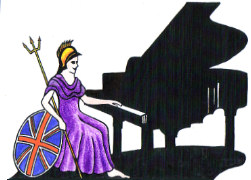Teachers, Accompanists and Piano Entertainers in the UK

UK Piano Page

Donaghadee, County Down BT21 0NL
Northern Ireland
We have a high quality range of New andAs-New
1a Vale Road
Crosby, Merseyside
England
Beautiful Pianos for Beautiful Music At the Piano
81 Myddleton Rd
London
Bounds Green, London N22 8NE
England
Piano specialists offering new, used and
946-950 Blackpool Rd
Lea
Preston, Lancashire PR2 1XN
England
A&C Hamilton Musical Instruments is Located in
11 Bishop Street
Londonderry, County Londonderry BT48 6PL
Northern Ireland
Henderson Music are Ireland's leading supplier of
Music Festival for performers and guests Our 10th
18-06-2022 01:30PM
The Morecambe Bay Piano Group was set up to extend
11-12-2021 02:00PM
The Morecambe Bay Piano Group was set up to extend
08-01-2022 02:00PM
The Morecambe Bay Piano Group was set up to extend
12-02-2022 02:00PM